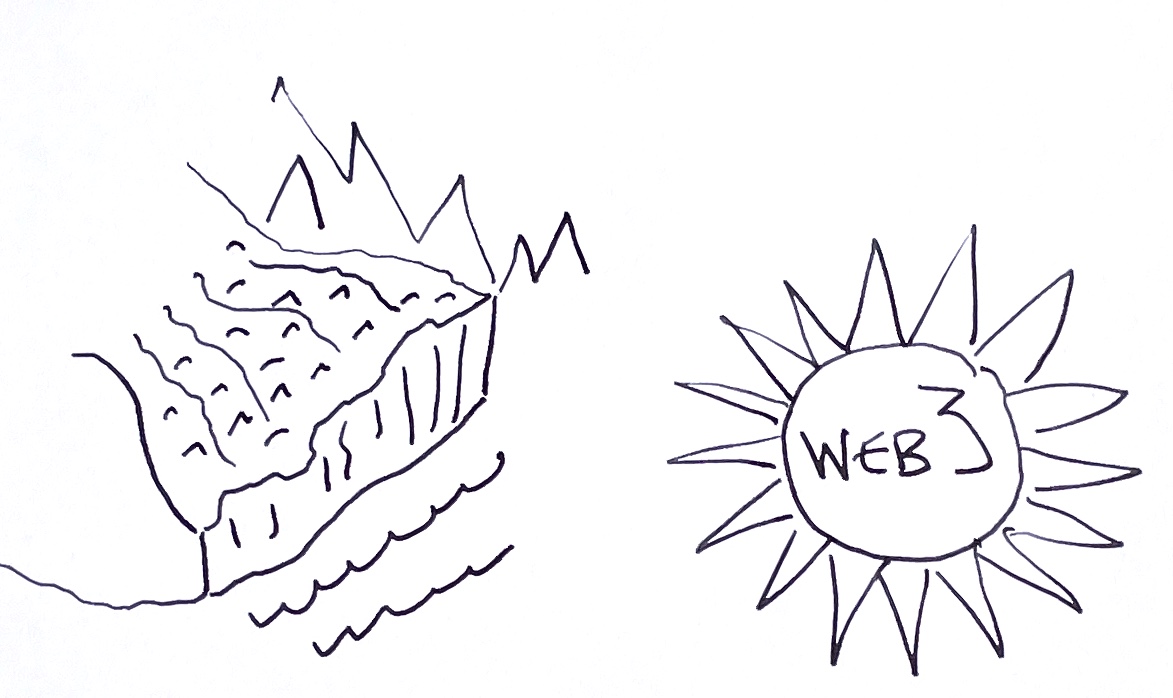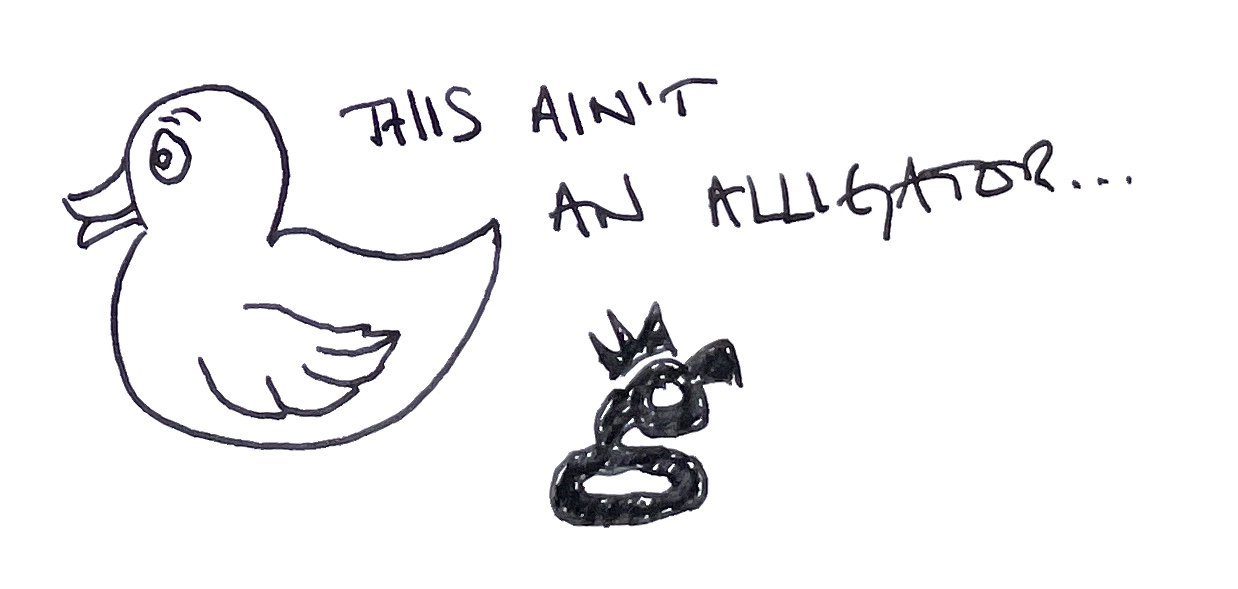Helium ain’t the only LoRaWAN network out there, and it’s certainly not the one that’s been around longest. Thomas over at Tingkart recently sent me this excellent video from the The Things Network YT channel called “The Silver Bullet to IoT Success”.
Spoiler alert: The “Silver Bullet” involves hard work.
If you don’t have 20 minutes to spare, here’s the short write-up. If anyone from the TTN YouTube channel sees this, you’re welcome to copy/paste any of this into your description.
The great news is that other very sharp minds have been learning about and trying to solve the IoT business problem. They share the distillation of a few decardes years work and prolly many millions of dollars in consulting fees in a little less than 20 minutes.
In the video below you’ll see Ferry Grijpink (I’d pronounce his last name cHi-pink” using the German “ch as in Bach” and be pretty close) from consulting behemoth McKinsey walk through the state of the (non-crypto) IoT space right now. I’m impressed by Ferry, this is a sharp cat!
NOTES
We are in an Ice age of IoT, and winter is coming for the global economy.
[Nik’s notes: This Ice Age thing is probably the dominant narrative, but it doesn’t mean it’s true. The idea that “winter is coming” is super sexy from a FUD perspective, but I’d balance that perspective with the opposite end: Daniel is coming.
Daniel Andrade at Hotspotty (along with Max Goossens and the rest of the team) are showing us how fast a new IoT-based business can grow using the rocket-fuel incentives of crypto. Daniel and Max aren’t the only ones building in the space; you’ve got BGFNeil with Trackpac, Paul at disk91, the Mycelium crew, the Hexagon Wireless crushers, and a host of less well known but equally competent operators out there building the next economy.
If we want to really stretch the Ice Age analogy, I’d put it this way: Sure, the ice age is coming, but web3 is also coming, and web3 burns with the white-hot intensity of a thousand suns, melting the ice and causing tsunamis of change to race around the globe.

I’ll keep my notes in italics from here on out.]
Back to the notes from Ferry’s talk, which is excellent:
Investors don’t believe in IoT anymore, but bottom up efforts (like Hotspotty, Trackpac, and other lean and fast web3 based companies) are working well and can be profitable.
This sounds like supporting evidence for my “Ice Age meets white-hot web3” hypothesis. Small & lean companies are building fast while the big money backs off. That’s what opportunity smells, looks, sounds, and feels like. Ever seen a duck? You’re looking at one right now. Don’t wait for the Encyclopedia Britannica to confirm it, MOVE!

The first important key to an IoT business is: Making it easy.
As the joke goes, “The e in IoT is for easy”. If you’re in a position to make the business use case of IoT easy, you’re sitting on a golden egg machine. Many people are not sitting on that machine. Psst: You’ll have to build it.
The follow on and equally important aspect is: Change management is key.
Both fascinating and predictable (McKinsey is a consultancy helping large businesses go through a change management procession), this idea is not to be overlooked. We, the new players in IoT, would be wise to learn from some of the biggest and brightest in the industry, and Mr. Grijpink is certainly among that crowd. Do not for even a femtosecond think that your path to install some rad IoT solution at a business will be easy. People are resistant to change. If you want to be successful, make sure some part of your business addresses this change management.
The two commandments of IoT Businesses:
- Thy devices shalt work straight out of the box.
- Thou shalt ROI quickly.
Ferry didn’t actually reference “two commandments”, but I thought it was useful as a framework.
What Ferry DID say was, “If you need a deep integration in the SAP, if you need a lot of of institutional change management, the next 12–18 months are going to be really tough for you.” Read: Big businesses that can’t move fast are about to freeze & shatter.
So, what can you do?
1 — Watch for the environment to change. Or change the environment. That is far harder to do, but at a local level is achievable. For example, if you get just a few local businesses to start using your IoT or 5G solutions and it gives them an edge, you can bet you’ll have many more customers (and competition) quickly following.
What did he mean by “Watch for the environment to change?” Ferry gave the example of UK doctors changing en masse in response to an environmental change. Pre-pandemic none of them wanted to do online consults; they thought it was silly, a waste of time, not real “doctoring”. Within 6 weeks of the pandemic hitting and lockdown, UK docs were complaining that no online consultation was available and that “the system” was failing them.
2 — Silver bullet: Make it really simple.
Ferry gave the example of the outputs from all your efforts should be as simple as:
Red, green, or double green.

How can you make it incredibly stupid simple? If you’re an engineer and think it’s simple…make it 10x simpler. As interviewer and The Things Industries CEO Wienke Giezemann says in the video, “We [engineers & developers] are addicted to hard problems.” That’s great if you’re an engineer. That’s terrible if you’re building for normal people, who by and large are addicted to social media.
Another great Ferry quote: “People don’t want to use technology, they just want to do their job.” Again, keep it super simple. Use IoT solutions to make it easier for someone to do their job and you’ll make the “change management” problem much easier to solve.
Want to build a successful IoT business? Solve: How can you take a problem away?
Be as complex in the backend as you like, but the front-end should be Samsara simple: Drive slower, drive faster, or keep this speed.
When McKinsey looked at IoT businesses cases from a financial perspective, 95% of business cases worked out. There are not technology hurdles when it comes to IoT. There are “change” and “ease of use” hurdles.
A 95% success rate is obviously good news, but in stark contrast to the assertion that investors have lost confidence in IoT. Why isn’t IoT seeing higher adoption? McKinsey thinks it’s because of a change management problem in the institution.
A “you win / I lose” business case isn’t sustainable. For example, if you’re buying materials and IoT makes your buy less materials due to efficiency gains, that’s great for you but not for the material producer. A case that allows you to use more materials to build a better product is one direction you might consider, as an alternative.
Find a business cases that work throughout the value chain, and make sure everybody wins.
Thanks again to Thomas at Tingkart for sending that video my way and to the good people at TTN who put that on. If you want to keep up to date on the latest I’m active on Twitter & Discord. If you want a weekly update for industry insiders, check out the GKIIN. Rock on! ~Nik

Leave a Reply